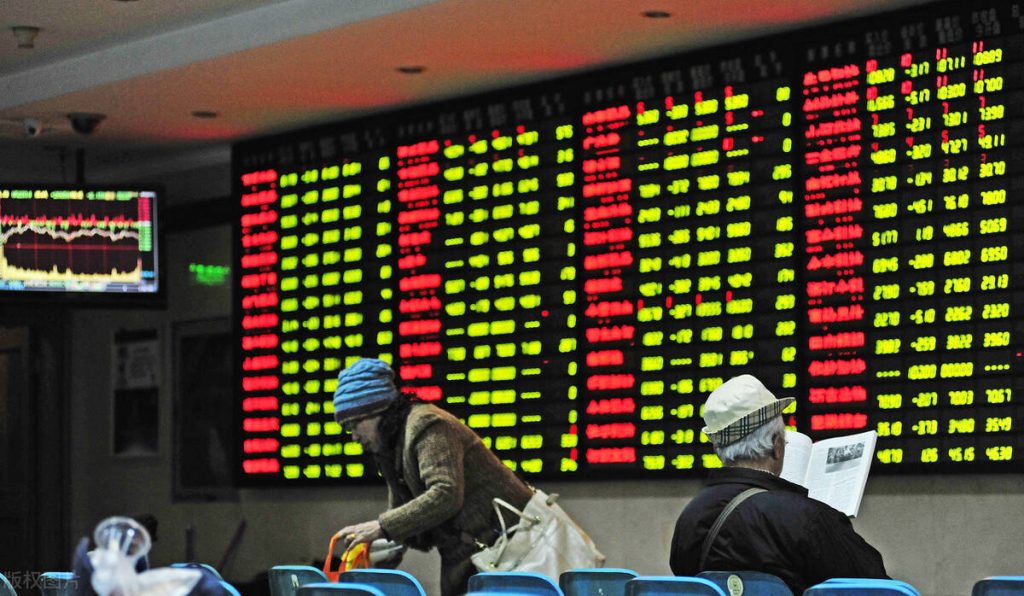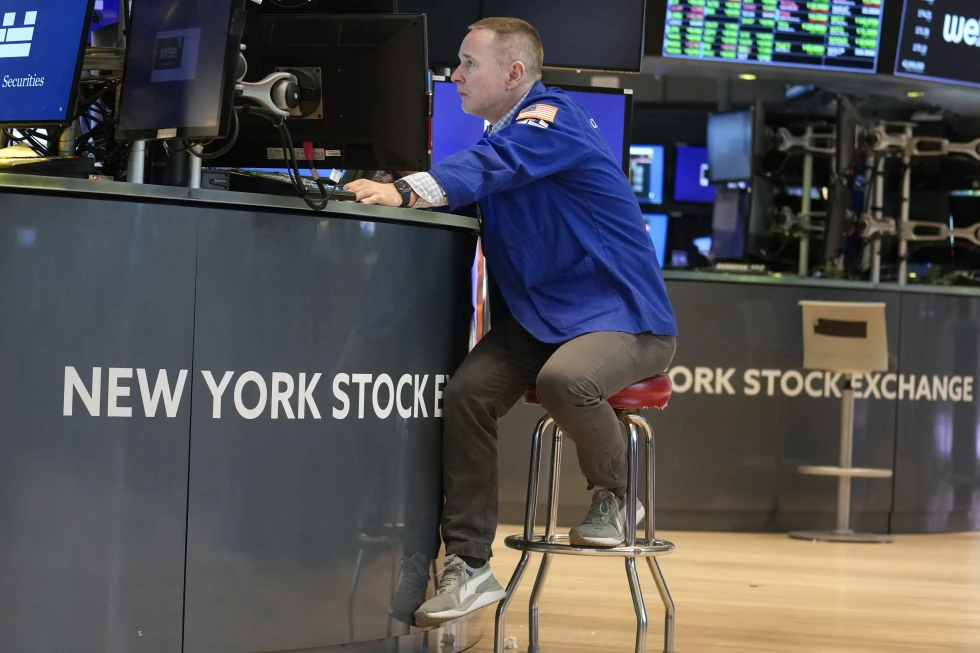The recent performance of Wall Street has been a topic of interest and speculation, as it has shown signs of a potential breakthrough.
On Tuesday, the market experienced a modest uptick, bringing it within striking distance of its previous record.
This development has been attributed to the optimistic outlook generated by Japan’s decision to maintain low interest rates, a move that has sparked hope for similar measures on a global scale.
The S&P 500, a key indicator of market performance, saw a 0.6% increase, leaving it just 0.6% short of its all-time high established nearly two years ago.
Meanwhile, the Dow Jones Industrial Average surged by 251 points, or 0.7%, setting a new record for the fifth consecutive day. The Nasdaq composite also made significant gains, climbing by 0.7%.
Notable among the companies contributing to this positive trend was Enphase Energy, which saw a remarkable 9.1% increase in its stock value.
This surge followed the announcement by the solar industry microinverter manufacturer that it would be implementing a 10% reduction in its global workforce and undertaking other efficiency measures.
Additionally, the market received a boost from the performance of oil-and-gas companies, as crude prices showed signs of recovery from previous declines.
While the global market experienced a mixed performance, with trading largely subdued, Japan stood out as an exception.
The Nikkei 225 index recorded a substantial 1.4% increase following the Bank of Japan’s decision to maintain its benchmark interest rate below zero and keep other policies unchanged.
This strategic move was aimed at stimulating increased borrowing and spending, and has been viewed as a potential precursor to similar measures in other regions.
The implications of these developments on the global economy remain to be seen. However, the alignment of positive market movements in both the United States and Japan has generated a sense of optimism and anticipation among investors and analysts.
The potential for a synchronized approach to interest rates and economic policies across major economies could have far-reaching implications for financial markets and global economic stability.
As the market continues to respond to these developments, it will be important for investors and policymakers to closely monitor the evolving landscape and its potential impact on investment strategies, economic growth, and global trade dynamics.
The interplay between market performance and macroeconomic policies will undoubtedly shape the trajectory of financial markets in the coming months, making it a critical area of focus for stakeholders across the globe.
In conclusion, the recent uptick in Wall Street, buoyed by positive developments in Japan, has sparked optimism and raised expectations for potential global economic implications.
The convergence of market movements and policy decisions underscores the interconnected nature of the global economy, highlighting the need for a comprehensive and coordinated approach to navigating the evolving landscape of international finance and trade.
The recent surge in the S&P 500, with an impressive gain of over 15% since late October, has been fueled by growing optimism surrounding the potential implementation of a more accommodative stance on interest rates within the realm of Wall Street.
This surge has been underpinned by a decline in inflation from its peak two summers ago, coupled with sustained economic expansion.
Anticipation is mounting for the Federal Reserve to shift its strategy in 2024, moving away from an aggressive interest rate hike approach.
Federal Reserve Chair Jerome Powell’s recent remarks appeared to tacitly acknowledge these expectations, as he refrained from staunchly opposing traders’ projections of multiple rate cuts in the upcoming year.
The prospect of lower interest rates has been warmly received by the financial markets, as they tend to bolster asset valuations and alleviate strain on both the economy and the financial system.
The aspiration is for the Federal Reserve to navigate what was previously deemed an exceedingly challenging balancing act: initially reining in inflation through elevated interest rates, and subsequently implementing rate cuts to avert an economic downturn.
The recent report on the housing industry has shown that the sector is in a stronger position than previously expected.
Homebuilders have broken ground on many more homes in November than anticipated, with roughly 200,000 more at a seasonally adjusted annualized rate.
This news has been welcomed by many, as it suggests that the economy is performing better than expected.
However, there are those who remain cautious about the current state of the stock market. Some critics argue that the recent rally looks overdone, and that stocks now appear expensive relative to the profits made by companies.
More cautious investors also point out that the number of rate cuts traders have penciled in for 2024 looks unlikely unless the U.S. economy falls into a recession.
These concerns have been echoed by some Fed officials, who have become more cautious about the prospect of rate cuts since Powell’s comments last week.
The president of the Federal Reserve Bank of New York, for example, has said that it is “premature to be even thinking” about whether to cut rates in March.
Despite these concerns, the stock market has remained buoyant, with the S&P 500 coming off its seventh straight winning week for its longest such streak in six years.
Investors have poured $6.4 billion more into U.S. stocks last week than they withdrew, which is the fourth-largest such inflow since the bank began tracking the data in 2008.
To Lori Calvasina, head of U.S. equity strategy at RBC Capital Markets, the S&P 500 still looks reasonably valued given moderating inflation.
However, she also acknowledges that the risk of a “short-term pause” for the market is rising given how much fervor has built up. One survey of investor optimism is well above its long-term average, among other potential signals of caution.
In the bond market, the yield on the 10-year Treasury has slipped to 3.92% from 3.94% late Monday. This is a significant drop from its highest level since 2007, which put tremendous downward pressure on the stock market.
Elsewhere on Wall Street, shares of Tylenol maker Kenvue rose 2.2% following a favorable ruling for it in federal court.
The company had sought to exclude the opinions of experts in a multijurisdictional case against it on whether in-utero exposure to acetaminophen, the pain reliever used in Tylenol, could lead to autism or attention deficit disorder.
Judge Denise Cote of U.S. District Court for the Southern District of New York agreed with Kenvue, ruling Monday that the testimony was inadmissible.
All in all, the S&P 500 rose 27.81 points to 4,768.37. The Dow gained 251.90 to 37,557.92, and the Nasdaq climbed 98.03 to 15,003.22.
It remains to be seen whether the current momentum can be sustained, or whether the market will experience a short-term pause as some predict.
Nonetheless, the recent positive news from the housing industry is a welcome development for the U.S. economy.

It’s interesting to note the recent developments in the financial markets. The slight decrease in the yield on the 10-year Treasury from 3.94% to 3.92% is indicative of the ongoing fluctuations in the bond market.
This shift is particularly significant considering that the yield reached above 5% in October, marking its highest level since 2007.
Such movements in the bond market have exerted considerable downward pressure on the stock market, reflecting the interconnectedness of various financial instruments and their impact on broader market dynamics.
Furthermore, the rise in shares of Kenvue, the maker of Tylenol, by 2.2% following a favorable ruling in federal court is noteworthy.
The company’s successful bid to exclude the opinions of experts in a multijurisdictional case regarding in-utero exposure to acetaminophen, the active ingredient in Tylenol, and its potential link to autism or attention deficit disorder, is a significant legal victory.
Judge Denise Cote’s ruling in favor of Kenvue, deeming the testimony inadmissible, underscores the company’s legal position and its potential implications for future cases or industry practices.
The overall market performance is also worth noting. The S&P 500’s increase of 27.81 points to 4,768.37, the Dow’s gain of 251.90 points to 37,557.92, and the Nasdaq’s climb of 98.03 points to 15,003.22 reflect a positive trend in the stock market.
These movements suggest a growing investor optimism and confidence, potentially fueled by hopes for a rate cut and other macroeconomic factors.
In summary, these recent developments in the bond and stock markets, as well as the legal victory for Kenvue, collectively paint a dynamic and evolving picture of the financial landscape.
It will be intriguing to observe how these factors continue to shape market sentiment and influence future investment decisions.
